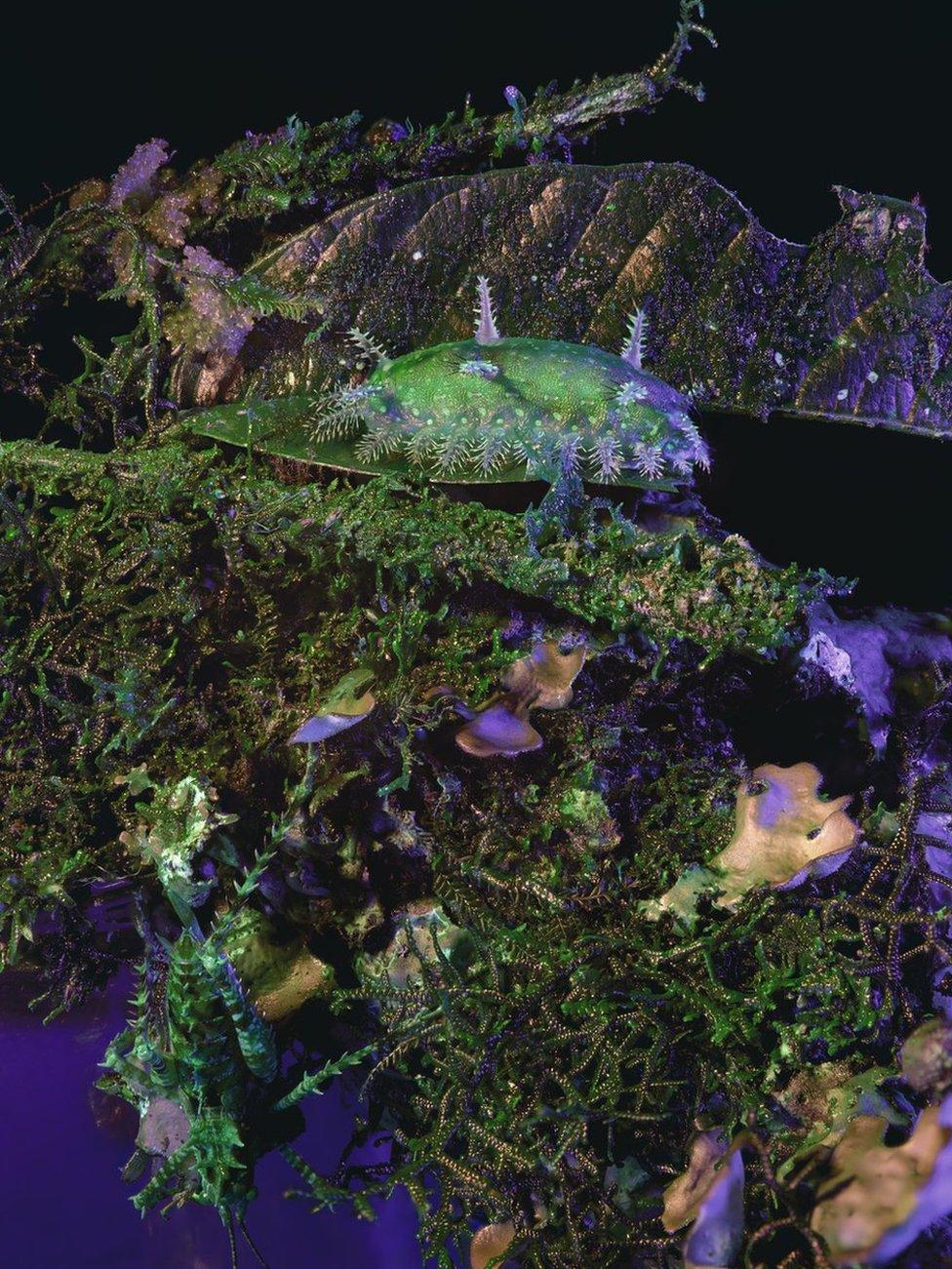The rainforest under a different light
- Published
Richard Mosse's latest project, Ultra, uses scientific imaging techniques to capture the ultraviolet fluorescence of living things within the rainforest.
This series examines the ways in which plant and insect life has evolved over millions of years for survival, often by developing forms of camouflage.

Drosera tokaiensis

This projects builds on Mosse's previous documentary work using various imaging technology to document conflict and war in new ways. He used thermal cameras to explore issues around refugees in Europe, and has used military infrared film to examine the conflict in the Democratic Republic of Congo, an obsolete technology historically used to make camouflaged combatants visible.
Similarly, in this work the UV fluorescence technique renders camouflage within nature more visible, bringing out unseen detail and making the familiar unfamiliar.

Parasa indetermina with Aretaon asperrimus


Dionaea muscipula with Mantodea

For Mosse, this unearthly light, as he describes it, becomes profoundly beautiful, heightening the perception of an interdependency of life within a complex and fragile eco-system.
"My subject, the tactile cloud forest mosses, lichens, spider webs, bark, corporeal orchid flesh and the dazzling carapaces of insects, once illuminated by this unearthly light, became profoundly beautiful," says Mosse.
"Wandering through the forest at night with a UV torch, I was enchanted by an unseen glowing world of natural activity."

Katydid with Nepenthes

Mosse builds his images from multiple individual frames, sometimes using 50 or more exposures to build large-format gallery prints.

Exhibition view of Acineta superba


The work is currently on show at the Altman Siegel gallery, San Francisco, USA.

All photographs copyright Richard Mosse.